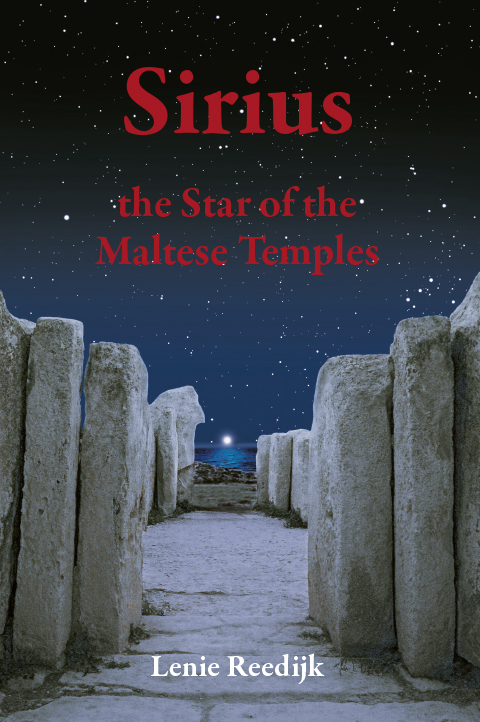About the Book
Sirius, the Star of the Maltese Temples
by Lenie Reedijk
The Maltese megalithic temple culture poses many questions, that are addressed by Lenie Reedijk in this carefully researched work. Why have so many temples been built– more than 34 are still extant and 66 have been recorded? Why the slight shift in orientation of their axes, no two of them exactly the same? And why is it that they have remained largely unknown?
Once the orientation of the Mnajdra South temple to the spring and autumn equinoxes had
been proved and accepted, the search for a celestial orientation of all the other Maltese temples has been the focus of serious research. The investigations, published in 1981 and 1992, of the first researchers George Agius and Frank Ventura found that the distribution of the temple orientations were highly non random, meaning that a very specific mechanism must have caused them. Obviously, this was sought in movements of the stars. They first consider the possibility of one star being the target of the orientations of all these temples. But seeing that this would lead to dates for the temples far older than their colleagues in the academic world would approve of, they rejected this possibility. This decision resulted in their first publication in a denial of a possible astronomical solution, and in a subsequent paper in the proposition that several different stars could have been the target.
But in view of the unity of the Maltese temple culture (the same temple design and the same style of figurines and spiral motives found inside them) the matter of the orientation of the main axes of the Maltese temples had never been satisfactorily solved.

According to the astronomical dating presented in the book Sirius, the Star of the Maltese Temples (2018, 2023) Malta’s temple culture is indeed very ancient. It developed during the Mesolithic, the period immediately after the last Ice Age, when the star Sirius became visible in all its splendour above the southern horizon at the latitude of Malta. Prior to that time, owing to the movement of the stars called precession, Sirius had been absent from the Maltese sky for five thousand years, until it became visible again in around 9,150 BC.
The astronomical dates for the temples also result in a logical progress and evolution in the temple buildings. The smallest proved to be the oldest. This is Hagar Qim North, orientated to Sirius in around 9,150 BC, while Ggantija South, the largest of all the temples, orientated to Sirius in around 4,250 BC, is the youngest. Moreover, the date for the start temple building presented in this book coincides with the famous megalithic site of Göbekli Tepe in southeast Turkey. Having been built at the same latitude as Malta, it was dated to the end of the 10th Millenium BC. It was proposed by Giulio Magli, professor of Physics at Milan University, that Göbekli Tepe was orientated to the star Sirius.
A Brief Look Inside
Lenie Reedijk
Contact:
lenie.reedijk@gmail.com
Kattenborg 5
NL-7151XG Eibergen
The Netherlands
Chamber of Commerce:
69501750


